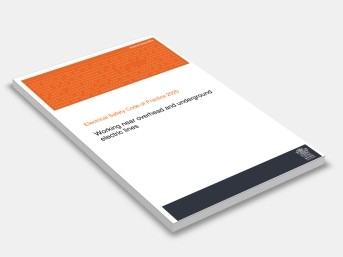Electrical Safety Code of Practice 2020: Working near overhead and underground electric lines
Electrical Safety Office
This Code should be read in conjunction with the Electrical safety code of practice 2013 – Managing electrical risks in the workplace, which provides guidance on managing general workplace electrical risks, risks associated with working around exposed energised parts and risks associated with electrical work.
This Code applies to a range of persons including but not limited to plant operators, painters, sign makers, persons erecting (or working on) scaffolds, and persons working with irrigation pipes near energised electric lines.
This Code does not apply to:
• Electrical work on energised (live) electrical equipment.
• Mobile plant or vehicles operating on a public road where the design envelope is not greater than the transit envelope and is also not greater than 4.6 metres in height. For example, a side loading waste collection vehicle collecting waste bins from the side of a public road under overhead electric lines.
• A crane or mobile plant when they are retracted and correctly stowed for travelling on a public road.
• Work carried out by emergency services personnel, including state emergency services, fire, police, volunteer rescue associations and ambulance personnel during a declared emergency or other local emergency incident.
• Work involving low flying aircraft like crop dusting, pesticide or herbicide spraying.
Contents:
1: Introduction
2: The Risk Management Process
3: Unsafe Distances
4: Operating Plant Near Overhead Electric Lines
5: Work Near Low Voltage Overhead Electric Lines Near Buildings And Structures
6: Clearing Vegetation Near Overhead Electric Lines
7: Agricultural Work Near Overhead Electric Lines
8: Transportation Of High Loads Near Overhead Electric Lines
9: Work Near Underground Electric Lines
Appendix A: Meaning Of Key Terms
Appendix B: Exclusion Zones For Overhead Electric Lines
Appendix C: Incidents Involving Live Overhead Electric Lines
